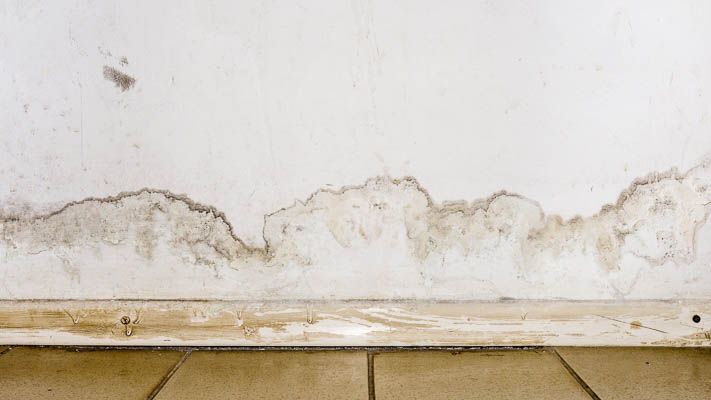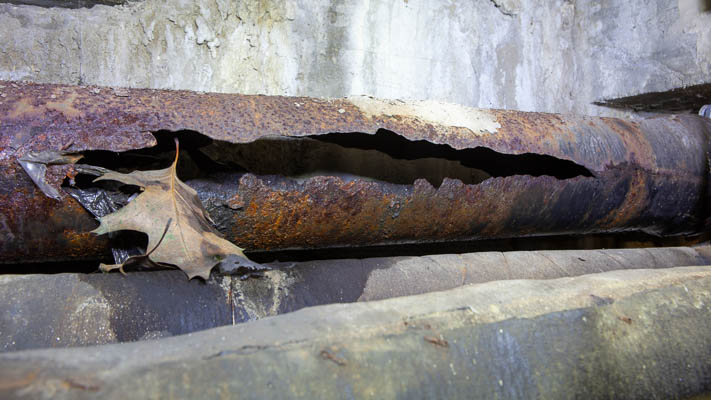What Is the Difference Between Relining and Repiping?
Both relining and replacing your drain and sewer pipes can restore the functionality of your home's outbound waste lines by stopping leaks, but they work in different ways and are best for different situations.
Pipe relining is a modern, trenchless repair method. It involves inserting a flexible, resin-coated liner into the damaged pipe. Once it's in place, the liner is inflated, pushing the resin against the inside of the old pipe. As the resin hardens, it forms a brand-new, seamless pipe within the existing one.
Relining usually requires little to no digging, so your yard stays intact. It's a quick fix and effective for minor to moderate issues like small cracks, leaks, and root intrusions. We have an article that breaks down the different methods of pipe relining for fresh water lines entering your home.
The main difference between relining and replacing pipes is that relining works with your existing pipes, while replacing means swapping them out entirely for new ones. Repiping involves installing new materials like PVC (and sometimes ABS), which can resolve all potential issues.
While repiping is more labor-intensive, it's a comprehensive solution that tackles severe damage, systemic plumbing issues, heavy root intrusion, and extensive corrosion. For information on comparing relining and repiping, you can jump straight to our detailed breakdown.
Is There a Difference Between Sewers and Drain Pipes?
Drains and sewer lines are both crucial to your home's waste system; however, they serve very distinct functions.
Drains are the pipes that carry wastewater away from fixtures like sinks, showers, and toilets, directing it through smaller pipes to the main drain line.
Located inside and sometimes beneath your home, drains handle immediate wastewater removal from each fixture and transport it to the sewer lines. Common issues with drains include clogs from hair, grease, and food particles, which are usually manageable with basic tools or cleaners.
On the other hand, sewer lines are large pipes located outside your home, typically underground, and are responsible for collecting wastewater from all your home's drains and transporting it away to the municipal sewer system or septic tank.
Sewer lines are prone to more serious problems, such as blockages from tree roots or damage from shifting soil, which can lead to significant issues such as slab leaks.

Understanding the difference between drains and sewer lines helps you diagnose plumbing issues more accurately; while drain problems are often isolated and fixed through more manageable methods, sewer line issues affect multiple drains or the entire system and typically need professional repair.
Common Problems with Sewer and Drain Pipes
Although most sewer and drain pipes are built to last for many years, several common problems may necessitate relining or replacement:
- Pipe Corrosion: Over time, metal pipes can corrode due to constant exposure to wastewater. This leads to weakened, brittle pipes that are prone to leaks or complete failure.
- Root Intrusion: Tree roots naturally seek out moisture and can invade small cracks in your sewer lines. As roots grow, they can cause blockages, breaks, or collapse the pipe entirely.
- Pipe Shifting or Misalignment: Ground movement or settling can cause pipes to shift, leading to misalignment. This can result in slow drainage, recurring blockages, or leaks.
- Pipe Blockages: Buildup from grease, debris, or other waste materials can cause blockages, slowing down or stopping wastewater flow. This may require relining or replacing the pipe to restore proper function.
- Bellied Pipes: A pipe belly occurs when a section of the pipe sinks due to soil conditions or improper installation. This creates a low spot where waste collects, leading to frequent clogs and potential damage.
These issues, if left unresolved, can cause severe damage to your property and require immediate attention. Depending on the extent of the problem, relining might offer a temporary fix, but full replacement often provides a more permanent solution.
The Factors to Consider When Choosing Between Relining or Repiping
When deciding whether to reline or replace your home's drain and sewer pipes, there are several important factors to consider. To make it easier, we've outlined our top five factors and how each option is impacted by them:
- Extent of Damage: Relining is suitable for minor to moderate issues such as small cracks, leaks, and root intrusions. It's ideal for addressing localized problems without extensive disruption. However, if your pipes are severely damaged, exhibit extensive corrosion, or have structural failure, replacing the pipes is the better option. Replacing is necessary for pipes with severe issues like significant cracks or major root damage that relining alone cannot fix.
- Cost vs. Longevity: Relining is often less expensive upfront because it avoids the need for excavation and major labor. It extends the life of your waste pipes by 20 years or more, making it a cost-effective solution for pipes in relatively good condition. In contrast, replacing pipes involves higher initial costs due to excavation and new materials. However, this method provides a fresh start with new pipes, which can last between 50 and 100 years, potentially offering a more durable and long-term solution.
- Property Impact: Relining is less invasive, causing little to no disruption to your property. It preserves your landscaping, driveway, and other external features since it does not require digging. On the other hand, replacing pipes typically involves excavation, which can impact your property by disturbing landscaping, driveways, and other structures. While this may be necessary for extensive repairs or upgrades, it's important to be prepared for the temporary disruption to your property.
- Time and Convenience: Relining is generally quicker, often completed within a day or two. This method offers minimal inconvenience, as it requires less disruption and fewer labor hours. Replacing pipes takes longer due to the excavation and installation process, which can extend over several days or weeks, depending on the complexity of the project. Although it is more time-consuming, replacing pipes provides a comprehensive and thorough solution to significant plumbing issues.
- Future Maintenance and Suitability: Relining is effective for targeted repairs and reduces future maintenance needs in the areas that have been relined. However, it may not address systemic issues affecting other parts of your plumbing system. Replacing pipes offers a comprehensive fix, ideal for outdated or severely damaged systems. This method minimizes future maintenance needs by removing old pipes entirely and installing new ones, which can address widespread problems and enhance overall system reliability.
Get your free estimate today
With over 75,000 repipes completed, we've perfected our One-Stop Repipe™ for your home.
Should I Reline or Replace My Drain or Sewer Pipes?
At Repipe Specialists, we recognise that while sewer and drain relining is a less intrusive approach, it is not a long-term solution.
Relining might seem appealing due to its lower impact, but it merely addresses the symptoms rather than the root cause. We believe that the only permanent fix for outdated, deteriorating sewer and drain pipes is full replacement.
Although we don't reline sewer or drain lines, when it comes to outbound waste lines, we always recommend a complete repipe, typically with PVC unless local regulations require ABS. This ensures the longevity and reliability of your sewer system.
If you have any questions about repiping your home's drains or sewer pipes, feel free to contact us to have one of our local repipe consultants provide a consultation and quote, delivered in-home or remotely.
Get a Quote for Your Home Drain or Sewer Replacement
Here at Repipe Specialists, we've replaced the drains and sewer pipes in many homes across the States. We continually get positive customer feedback from customers about their overall home repipe experiences. We often exceed their expectations on:
- Speed: Our repipe crews typically complete a repipe in a day, returning on another day for wall patching.
- Convenience: Through our One-Stop Repipe™ Process, we handle everything from permits, to wall patching, to inspections.
- Cleanliness: Our crews are trained to protect your home while working (we cover all surfaces with protective sheeting), and to clean up fully at the end of each day.
- Peace of Mind: Repipe Specialists is a fully licensed plumber in every state we operate in, and we back all of our repipes with a lifetime warranty.
- Financing Programs: To help take the sting out of unplanned repipe expenses, we offer several financing programs.
- Price: As a specialist that performs hundreds of repipes a week, we can deliver high quality repipes at a lower cost vs generalist plumbers. We have an article that covers repipe cost factors in detail.
Schedule a free in-home consult, and one of our local repipe consultants will explain all your replacement options and provide you with a written, fixed-price quote.

